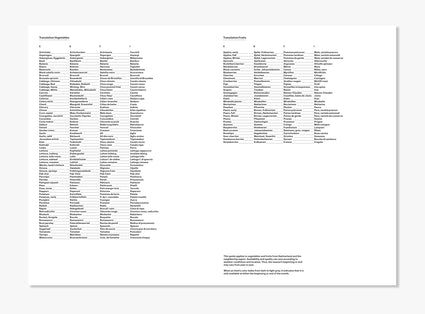17.02.23
Easy ways to lower your carbon footprint through diet
Yes, changing your diet can make a big difference! Here are some tips and tools to help you fight climate change.
Do you want to decrease the size of your carbon footprint, but you don’t know how? It can feel overwhelming when you’re just one person of billions in this world. What can little old me really do to make an impact? Let’s start by looking at your diet. You’ve been told to eat less meat and less dairy, but does it really make a difference? Absolutely. You can lower your carbon footprint by two-thirds just by eliminating meat and dairy from your diet. Raise your hand if you ever thought, “I’ll try the vegan cheeseburger next time, but today, I really want the real thing,” and then you never try the vegan option… We’ve all been there. And before you think I will lecture you and tell you all you can eat is grass and pebbles, I’m not! I am here to suggest some ideas and provide tools to help you make more conscious choices moving forward.
Diet Footprint Calculator ↗
A great way to begin feeding your curiosity is by engaging with an interactive diet footprint calculator. This creative tool which Prina Shah, Felix Stephenson and Becky Rush created converts your food consumption habits into informative graphics. By plugging in one food item and the frequency in which you consume it, the calculator will provide a graphic that compares your consumption to heating a house, taking a shower, etc… While this calculator compiles great visual information, it also equips you with a chart that compares the carbon output of a food item with other similar food options (ie: if you’re a coffee drinker, it will present you with a bar chart of various beverages.)
How to identify and reduce high-carbon foods
Can we make environmentally positive changes in our food choices without feeling deprived? Yes definitely! Let's take a peek at this chart below. Do you enjoy pork as much as you enjoy beef? Great news! By swapping out beef for pork, you have exponentially lowered your carbon footprint. Think of this as an opportunity to be creative with how you eat. When you look at this chart, you might find a food you really enjoy that emits fewer kilograms of carbon in its production. Having this knowledge gives you the superpower to make sustainable (and tasty) food choices. You can even experiment with new recipes!
Know where your food comes from
You might look at this chart and say “I’m a chocoholic and there’s no way I can give that up! Why are you doing this to me?!?” Yes, chocolate can produce more emissions than beef *jaw drop.* You can still have your chocolate, I promise. Next time you’re at the supermarket, look for chocolate that was harvested and produced from sustainable practices. The number one thing to avoid is chocolate production which contributes to deforestation. Here is a starter list of environmentally friendly chocolate. I used chocolate as an example, but as you can see, where your food comes from is as important as the types of food you choose to eat.
Let’s not forget that carbon emissions can sneak into our diet not only from food production but from food transportation. By choosing to eat local, organic and seasonal foods, you can rest easy knowing that your meal hasn’t traveled by plane, train and truck all over the world. Maybe we don’t need that can of tomatoes harvested in China, then prepared in Italy, and then packaged in California. After all, does your food need to be better traveled than you?
In conclusion: what are some easy ways to lower our carbon footprint through food?
- Swap out foods with high carbon emissions for foods with lower ones.
- Be mindful of where your food comes from (how and where it was harvested).
- Choose organic and seasonal produce.
- Get creative, have fun, and explore new foods and recipes.

Warmly, Julie
Source: https://www.bbc.com/news/science-environment-46459714








Anonymous / 03.2023
great info! thanks for the post